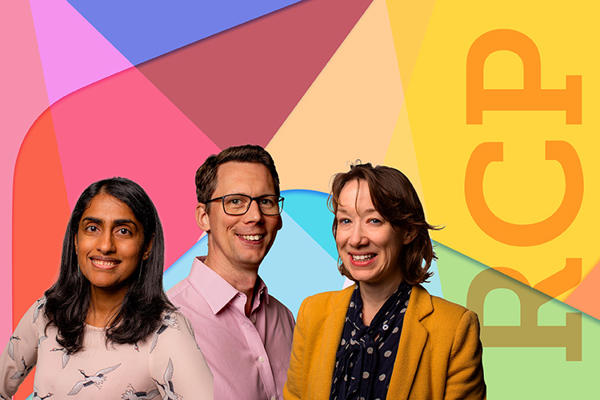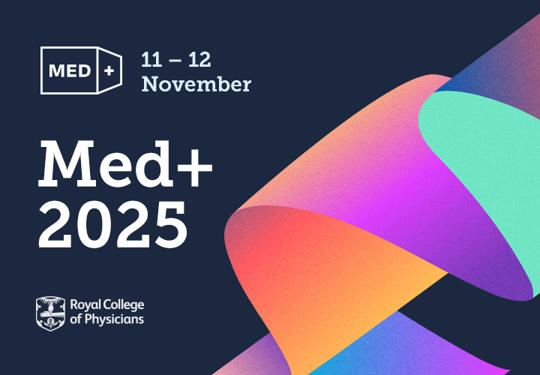When Dr Simon Patten, deputy director of medical education at the Royal Devon University Healthcare NHS Foundation Trust, reflects on the future of medical training, one theme stands out: flexibility. For him, alternative pathways into medicine, like portfolio pathway submission, are not a fringe experiment, but a necessary response to the shifting priorities of today’s doctors and the workforce challenges facing the NHS.
‘People’s priorities have changed,’ he says. ‘We see that in the focus on less-than-full-time working, where time is often valued more than money. People want to settle, put down roots, and still have a meaningful career. Traditional training programmes don’t always make that easy.’
A changing landscape
Work–life balance is not new to the medical profession, but it has become harder to ignore as younger doctors make different choices about how, where and at what pace they want to progress.
Two-doctor households face particularly difficult decisions. One partner may be placed in Exeter, another in Essex – leaving families split between locations. For others, the desire to settle in one place, buy a home and build a support network is paramount. Simon argues that training models need to catch up with these realities.
‘For some, moving across the country every year is fine – they want to advance rapidly and they’re happy to go where the work is,’ he says. ‘But others want to develop their career in one place or at a different pace. That doesn’t make them any less ambitious, and it certainly doesn’t make them any less valuable as doctors.’

Why alternative pathways matter
So what do alternative pathways offer? In short, stability, consistency and the opportunity for deeper professional development. Rotations in traditional training programmes provide breadth, but they can also mean leaving projects unfinished and relationships unbuilt.
‘If you rotate every year, it’s hard to get to know people well enough to spot development opportunities,’ explains Simon. ‘Lots of projects start but never finish. In contrast, staying in one place for 3 or 4 years lets you complete projects, test ideas and build the relationships that help you take on future roles.’
The benefits are not only for doctors themselves. Departments also gain from having long-term colleagues who understand the local system, smoothing the annual August handover period and improving continuity of care. Employers, meanwhile, get to see what candidates can deliver before making consultant appointments – making job planning more sustainable.
The approach also allows earlier and more consistent leadership development. Resident doctors in longer-term positions can take on responsibilities sooner, giving them valuable experience before they become senior decision-makers.
Lessons for training programmes
Alternative pathways are not intended to replace traditional training. Rather, Simon sees them as complementary – two routes working in parallel.
This diversity is particularly important in areas like the south-west of England, where the population is older and often living with multiple chronic conditions. The skill set needed locally may not always be reflected in who succeeds through competitive national recruitment.
By comparing outcomes across both models, trusts and health boards can also learn valuable lessons. For example, the early cohorts of alternative pathway doctors struggled with General Medical Council (GMC) submissions because they lacked structured annual reviews. In response, the Royal Devon programme introduced its own portfolio reviews, strengthening supervision and progression.
Similarly, acting-up opportunities are harder to arrange outside traditional programmes. To bridge the gap, the trust used the new specialist grade role as a transitional step – allowing doctors to demonstrate consultant-level work before formal appointment.
'It’s not that one is better than the other. Training programmes bring cross-pollination of ideas and experience, while alternative pathways bring stability and depth. Together, they create a more robust and diverse workforce.'
Dr Simon Patten
Deputy director of medical education
Starting small, thinking big
The project began at departmental level, focusing on specialties with recruitment challenges. Acute medicine, with its small training programme and high service demand, was an early test case.
Departments had to commit to 4-year posts, shifting away from the short-term mindset of annual trust-grade recruitment. Crucially, consultants also gave unfunded time to supervise and support, recognising the long-term value.
‘The mindset shift was moving from “I just want to fill a rota gap” to “I want to recruit and train a future consultant colleague”,’ says Simon. ‘That’s a very different approach.’
Support at divisional and hospital level followed, along with the development of internal rotations and partnerships to meet specialty requirements. The early success in acute medicine encouraged other departments to follow suit.
What went well
- Departmental buy-in: clinicians quickly saw the merits and invested their own time.
- High-quality recruits: the first cohort felt valued, driving them to develop new projects and embed themselves in the unit.
- Spillover benefits: other departments noticed the success and were more willing to create internal rotations.
And what didn’t
- End-stage submissions: portfolio doctors initially found GMC submissions daunting without structured reviews.
- Transition to consultant roles: there were few acting-up opportunities, which required some creative solutions, including use of the specialist grade role.
- Negative perceptions: the term ‘trust registrar’ often carries stigma, so the trust has worked hard to create clearer, positive progression structures.
Building relationships and resilience
One of the less tangible but equally important benefits of alternative pathways is the strength of the relationships that they foster.
‘Because of the longevity, you build closer personal connections,’ says Simon. ‘That makes it easier to support people when things aren’t working out or when they face personal challenges. I don’t think medicine has always been good at recognising when people are struggling, but this model makes those conversations easier.’
This pastoral dimension is increasingly relevant as the NHS grapples with burnout and retention. A workforce that feels seen, supported and stable is more likely to stay motivated and deliver high-quality care.
Looking ahead
Simon is clear that alternative pathways are not a silver bullet. They work best in larger hospitals that can deliver most specialty training requirements, or where partnerships can be developed across sites. They also rely on consultant goodwill and a trust-level commitment to long-term investment.
But he is equally clear that they represent an essential part of modern workforce planning.
‘There’s room for both routes,’ he says. ‘The more open and flexible we can be, the more chance we have of inspiring people to stay and work with us. People want to work differently now, and if we invest in that, it will pay off.’
'I want to recruit and train a future consultant colleague – not just fill a rota gap.'
Dr Simon Patten
Deputy director of medical education
The experience in Devon shows that with creativity, commitment and collaboration, trusts can design training pathways that meet the needs of today’s doctors and tomorrow’s patients.
A wider conversation
The RCP’s next generation campaign has highlighted growing concerns about training bottlenecks, competition ratios and career progression. In our 2025 national survey of resident doctors, only 44% of respondents were satisfied with the quality of their training. One in four were actively dissatisfied.
When we asked how they felt about rotational training, the answers were stark. 41% said that geographical rotations had a negative impact on their training, compared to just 26% who were positive. 28% wanted them abolished entirely, and 50% said that they should continue only with reform.
Resident doctors are asking for more than clinical experience. They want time to grow as leaders, researchers and educators. They want to develop skills in digital health, financial literacy and community engagement – training that reflects the reality of modern medicine, where doctors lead multiprofessional teams across sectors and settings.
Alternative pathways speak directly to those issues. They provide a route for doctors who want stability, for those who don’t fit the traditional mould, and for those whose personal lives make constant relocation impossible.
This is not about lowering standards or creating second-tier roles. It is about offering genuine alternatives – and in doing so, building a workforce that is both resilient and responsive to changing needs. For Simon, the conclusion is simple:
‘At no point is one inferior to the other. Both are valuable. Both are important. And together, they give us the kind of workforce that the NHS really needs.’
Five top tips
- Invest in longevity: 4-year posts foster deeper development and stronger relationships.
- Support supervision: Senior doctor time is critical to success.
- Create clear progression: Use specialist grade roles and portfolio reviews to support career advancement.
- Challenge stigma: Reframe ‘trust-grade’ roles with structured development and visible outcomes.
- Think beyond the rota: Focus on building future consultant colleagues, not just filling a gap.






